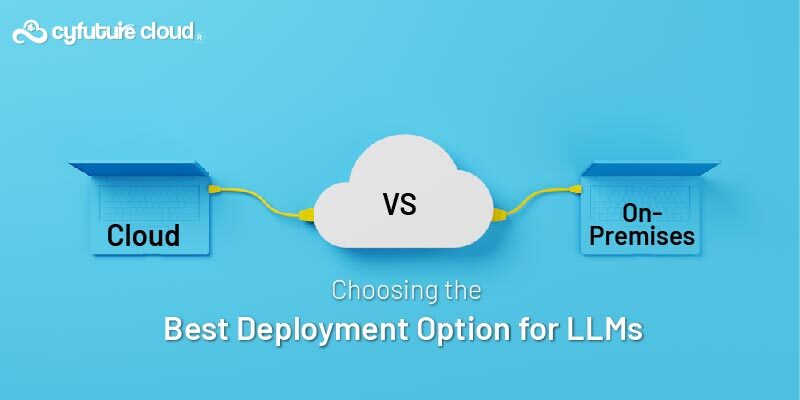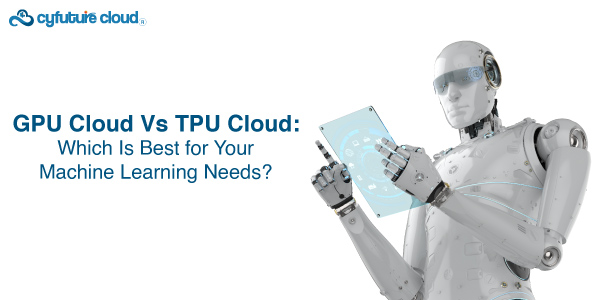Table of Contents
- An overview of Cloud Computing Technology and its capabilities for businesses
- What is Cloud Computing?
- Cloud Computing Benefits
- Processing Capabilities
- Choose cloud computing for free time to focus more in your business…
Presently, businesses of all sizes, locations, and industries are migrating towards cloud services. According to the Right Scale report, the number of respondents adopting public cloud from 2017 till now raises from 89% to 92%. On the contrary, the number of respondents from 2017 till now, adopting private cloud increases from 72% to 75%. Finally, the overall portion of respondents using at least one public or private cloud is now 96 %.
Simply put, cloud computing technology gives users access to cloud storage, files, software, and servers. Through an internet-connected device instead of a physical hard drive or local computer.
Cloud computing services include servers, storage, databases, and networking. Additionally, software, analytics, and intelligence. Over the internet or cloud, they are delivering flexible resources and faster innovation. Moreover, highly available and disaster-resistant systems, and economies of scale.
In simple terms, businesses of any size can harness powerful cloud software. Alongside, cloud framework to become bigger, leaner, and more agile. As well as compete with much larger companies.
Today, we talk about cloud computing benefits, challenges, and processing capability.
But, before we dive into the depth, let’s learn about what exactly cloud computing is?, What are the benefits and challenges of cloud computing and what is the processing potential of cloud computing technology?
An overview of Cloud Computing Technology and its capabilities for businesses
As a business owner, you look for things to simplify and to make sure your workload is minimal. You wonder how some business owners maintain their businesses with less staff. What many companies use is cloud computing for convenient and economical savings.
Unlike traditional computing, cloud computing helps businesses stay at the forefront of technology. As they don’t need to make large investments in purchasing, maintaining, and servicing equipment themselves. Cause, the cloud service providers do this for business owners and all cloud customers.
Substantially, businesses need to pay only for cloud services. As a result, they get low operating costs. They can run their business more efficiently, and scale their cloud computing plan based on their business needs.
Now, perhaps, you have an idea about cloud computing technology. So, let’s have a look at the exact definition of cloud computing.
What is Cloud Computing?
In simple terms, cloud computing describes the use of hardware and software services delivered via network, or cloud. Mainly, it relies on remote servers to store and access data. Instead, relying on local hard drives and private data centers.
Generally, before cloud computing, organizations purchase and maintain their own servers to meet business needs. They need to buy enough server space in advance. So, in the future, they can easily handle the risk of downtime and outages. Alongside, efficiently accommodate the peak traffic volume.
As a result, a massive server space went unused for much of the time. Cloud computing can reduce the need for onsite servers and other expensive IT resources.
Presently, we have several cloud service providers in India that allow companies to reduce the need for onsite servers. In addition, maintenance personnel, and other costly IT resources. Name of few best cloud service providers are cloudoye, Cyfuture cloud, and go4hosting.
Computer calculations in the cloud – Calculating the potential cost of cloud computing is a complex task. Further, calculating the cloud estimation is a guessing game because of different pricing structures of cloud providers.
Hence, the three major areas through which we estimate the cloud cost is- compute, storage, and network.
- Compute – Basically, it depends on the requirement of your processing power for your computing projects. It depends on the parameter like selecting a CPU including the operating system and the expected usage (in percent). Then, Cloud providers will calculate the cost of CPU based on their per gigabyte (GB) cost of virtual RAM.
So, you can purchase as much as you need, not too much or too little. In cloud computing you can scale up or scale down based on the need of your business.
- Storage – In cloud computing, you can purchase a virtual disk for storage. However, the cost of virtual disk calculates in units of GB.
- Network – The cloud costing measures in GB of data transfer. Plus, the cloud calculates bandwidth in terabytes (TB) or petabytes (PB).
Undoubtedly, these are the main cost centers of the cloud but they are not everything. The reason is each provider offers different packages in different ways.
Cloud Operating systems (Cloud OS) – Cloud OS or virtual operating system is an OS designed to operate within cloud computing and virtualization environments. However, it manages the operation, execution, and processes of virtual machines. Along with, virtual servers and virtual infrastructure. The back-end hardware and software resources too.
Cloud computing services – Currently, cloud computing services are available to meet technology requirements. The services like to store, manage, and process data.
It provides users with a series of functions including:
- Storage, backup, and data retrieval
- Creating and testing apps
- Analyzing data
- Audio and video streaming
- Delivering software on demand
The services of cloud computing are new and used by several different organizations. It comprises all companies, from big corporations to small businesses. It also includes nonprofits to government agencies and even individual consumers.
Applications – The applications of cloud computing are available in all fields. For example, business and data storage, social networking, management, education, global positioning system, etc. As a result, some of the widely famous cloud computing applications are –
- Online Data Storage
- Backup and Recovery
- Testing and Development
- Cloud Computing in Medical Fields
- Big Data analysis
- Entertainment Applications
- Social Network Platforms
- Anti-virus Applications
- Accounting Application
- Management Applications
- File Storage Platform
- URL conversion Applications
- e-Commerce Application
Functions of cloud computing – Cloud Functions are an easy way to run your code in the cloud. There are no servers to provision, patch, manage, or update in cloud functions. Moreover, functions automatically scale and are highly available and fault-tolerant.
However, they are great for building serverless backends, doing real-time data processing, and creating intelligent apps.
Cloud Computing Benefits
Indeed, cloud computing continuously changes the landscape of business through its benefits. In this world of fast, personalized, and impeccable services, cloud computing is the only way to successfully drive your business.
Thus, have a look at the major benefits of cloud computing to businesses:
1. Faster and flexible scalability
Presently, the main concern of the companies is scalability. Especially, for startups, SMBs, and subscription-based businesses. Further, cloud computing allows you to scale up or scale down the resources to meet your business needs.
Cloud computing can quickly scale the resources without investing anything in upfront infrastructure. Thus, it is the key reason for migration towards the cloud.
2. Reduce cost
Cloud computing helps in eliminating the expenses of buying hardware and software. As well reduces the cost of setting up and running servers, 24*7 power, and cooling. Plus, the amount spends on hiring IT experts for managing the infrastructure.
In simple terms, you need to pay only for what you use.
3. Low risk and high data security
Many cloud computing providers offer a broad set of policies, technologies, and controls. To strengthen the overall security posture to protect your data, apps, and infrastructure from potential threats.
Cloud computing providers handle the security of businesses both online and physically at their data centers. However, they not only ensure better protection of your data but also contributes towards cost savings. Cause everything you get from the same provider.
4. Business continuity
The essential part of business continuity planning is protecting your data and systems. Whether it should be a natural calamity, power failure, or other crisis. Generally, it ensures that the data stored in the cloud is backed up and protected in a secure and safe location. As a result, it minimizes downtime and loss of productivity in business.
5. Easy data backup and restore
Commonly, with an increasing number of cyberattacks and security breaches, data backup and restoration have become essential for businesses.
However, cloud computing helps you store critical data offsite, create multiple copies of it, and restore it when required.
6. Collaboration efficiency
Undoubtedly, this benefit of cloud computing gives your business the ability to communicate and share more easily. For instance, if you are working on a project in which your team members are from different locations. Then, here you could use cloud computing to collaborate with your team members.
7. Access to automatic updates
Cloud computing gives access to automatic updates for your IT requirements. Simply stated, your system will regularly be updated with the latest technology. Hence, this could include up-to-date versions of software, as well as upgrades to servers and computer processing power.
Cloud Compute Challenges
Despite all the development and potential of cloud computing, there are multiple challenges of cloud computing services that businesses face. Hence, here is a list of challenges that need to be taken care of. To leverage the maximum capability of the cloud.
Let us get started:
Latency of results
Cloud service latency is the delay time between a client request and the response received from a cloud service provider. Majorly, latency depends on internet traffic.
For instance, if Server A placed in India sends a data packet to Server B placed in New York. A sends the data at 04:38:00.000 GMT and B receives it at 04:38:00.145 GMT. Then, it shows the latency time of 0.145 seconds or 145 milliseconds.
Internet Connectivity
The cloud services are completely based on a high-speed internet connection. Therefore, the small businesses that face connectivity issues first spend on a good internet connection. As, vast business losses occur due to downtime.
Learning new methodologies
Generally, cloud computing is a complex and tedious task that needs research work. It requires immense knowledge and the need to learn new methodologies. Although, cloud computing is a highly paid job with many vacancies. Still, only a few professionals are engaged in this field because of a lack of expertise.
Therefore, cloud computing required the actively upskilling of professionals. So, they understand, manage and develop cloud-based applications with minimum issues and maximum reliability.
Understanding cloud architectures
Generally, with every application, there is a different type of architecture. Basically, hybrid architectures required significant changes to the architecture of the data center. In order to, accommodate specific application needs and requirements at a later date.
Therefore, it requires a deep understanding of cloud architecture. Along with the understanding of infrastructure components which is also a great challenge.
Cloud structure and networking
Commonly, the cloud structure and networking is different for a different type of businesses. Therefore, the understanding of that is must to finalize which structure is suitable for your business.
Understanding service provider options
Mainly, some clouds are better than others for different things. At a deep level, different clouds have different capabilities, even in core offerings, such as computing, storage, and networking.
Therefore, choosing one among several cloud service providers is a complicated task.
Processing Capabilities
Simply stated, Processing capability is defined as a statistical measurement of the inherent process variability of a given characteristic. To assess the processability you can use a process capability study to meet specifications.
However, in cloud computing, we check the process capability in terms of its hardware processing like CPUs. So, let’s plunge into it.
Central Processing Units (CPUs)
Primarily, the cloud computing service providers offer different core compute engines to different business owners. Based on the need of the business.
Being a next-generation technology, cloud computing is completely based on the internet and network. It provides services to business owners in various ways.
Technologies offered by cloud providers
Hence, the different technology innovations of cloud computing are listed below:
- Virtualization
- Service-Oriented Architecture
- Grid Computing
- Utility Computing
Requirements for Building a Cloud Infrastructure
To building out a cloud strategy, several in-depth steps must be taken to ensure a robust infrastructure.
Requirement 1: Service and Resource Management
All components of data center virtualized by cloud infrastructure. However, service management is a calculated package of applications and services. Through which customers can easily deploy and manage via a cloud vendor.
In addition, Service management comprises resource maintenance, resource guarantees, billing cycles, and measured regulations. Once deployed, management services help in creating policies for data and workflows. Further, to make sure it’s fully efficient and processes are delivered to systems in the cloud.
Requirement 2: Data Center Management Tools Integration
Data centers utilize a variety of IT tools for systems management and security, provisioning. Alongside, billing, customer care, directories, and others. However, these tools work with cloud management services and open APIs. To integrate existing OAMP systems (stands for operation, administration, maintenance, and provisioning).
Modern cloud services support a data center’s existing infrastructure. As well as leveraging modern software, hardware, virtualization, and other technology.
Requirement 3: Reporting, Visibility, Reliability, a Security
Actually, data centers need high levels of real-time reporting and visibility capabilities in cloud environments. To guarantee compliance, SLAs, security, billing, and chargebacks.
In the absence of robust reporting and visibility, managing system performance, customer service, and other processes are nearly impossible. Cloud services must ensure that data and apps should be secure and provide access to the authorized one.
Requirement 4: Interfaces for Users, Admins, and Developers
Cloud services give users an automated deployment and self-service to ease the complexity. Further, it helps in lowering operating costs and delivering adoption.
However, self-service interfaces offer customers the ability to effectively launch a cloud service by managing their data centers virtually. Moreover, designing and driving templates, maintaining virtual storage, networking resources, and utilizing libraries.
Furthermore, administrator interfaces present better visibility to all resources, virtual machines, templates, service offers, and various cloud users. At the end, all of these structures integrate by way of APIs for developers.
Use elasticity to achieve peak requirements
Cloud elasticity plays a vital role in pay-per-use services as it allows resources to be built out dynamically. Usually, for startups, it can be a more affordable option as the business does not pay more than it needs to begin.
On the other hand, elasticity can prove valuable to an organization that has spiked demand.
Choose cloud computing for free time to focus more in your business…
Undoubtedly, cloud computing has changed the way of business. You go through several key benefits of cloud computing. However, the one that stands out the most is time. Using cloud computing services gives you free time to more focus on your business. As a result, it allows you to focus on the things that matter the most – your customers.
Indeed, Go4hosting is one of the leading cloud computing service providers in India who use to deliver market-leading solutions. So, get in touch with our team today. See how we can use cloud computing technologies to help your business. In terms of, saving money, increasing productivity, and improving business performance. Also, to offer new and enhanced services to your customers.
Send this to a friend

 Server Colocation
Server Colocation CDN Network
CDN Network Linux Cloud Hosting
Linux Cloud Hosting Kubernetes
Kubernetes Pricing Calculator
Pricing Calculator
 Power
Power
 Utilities
Utilities VMware Private Cloud
VMware Private Cloud VMware on AWS
VMware on AWS VMware on Azure
VMware on Azure Service Level Agreement
Service Level Agreement 



















